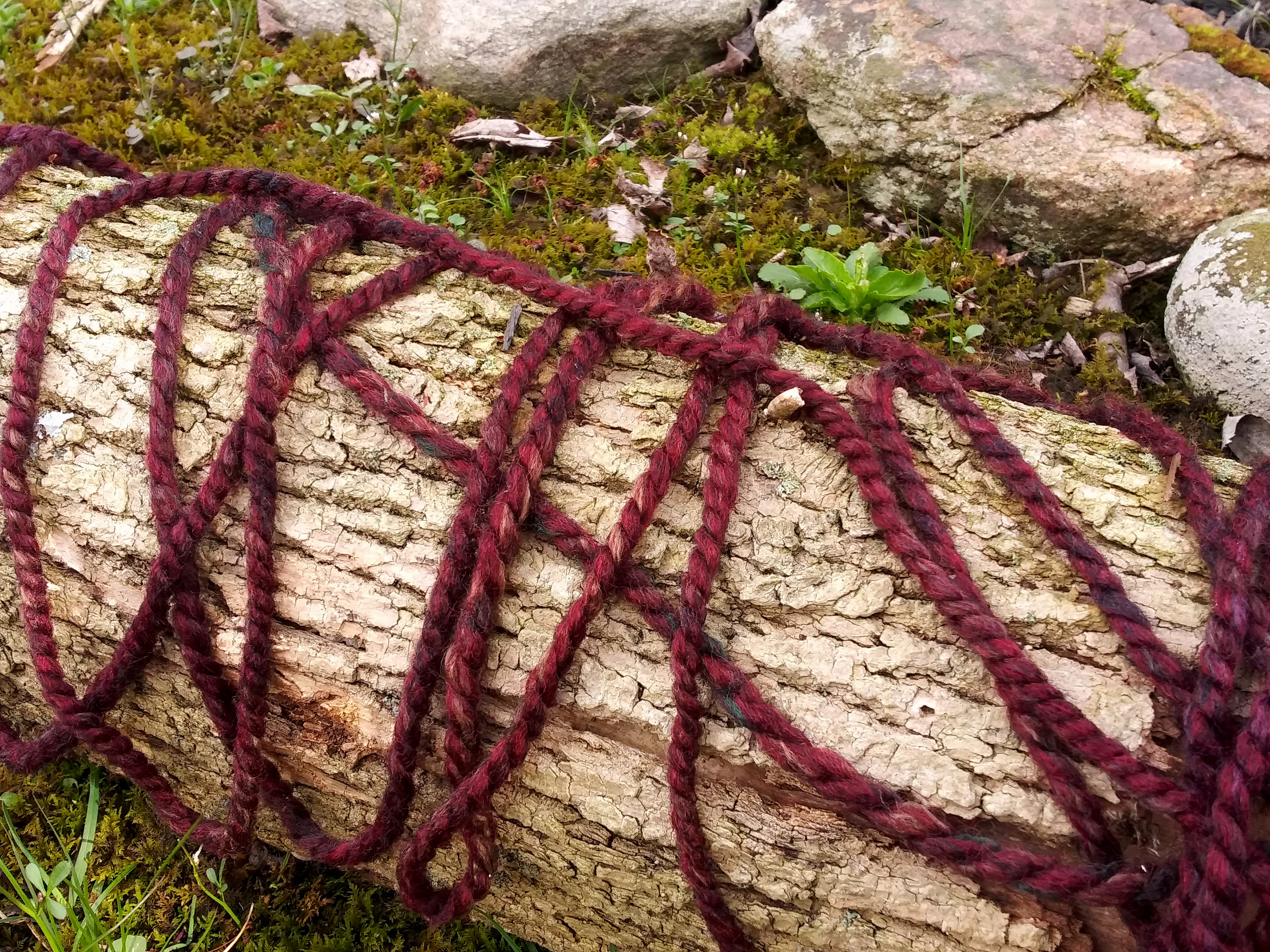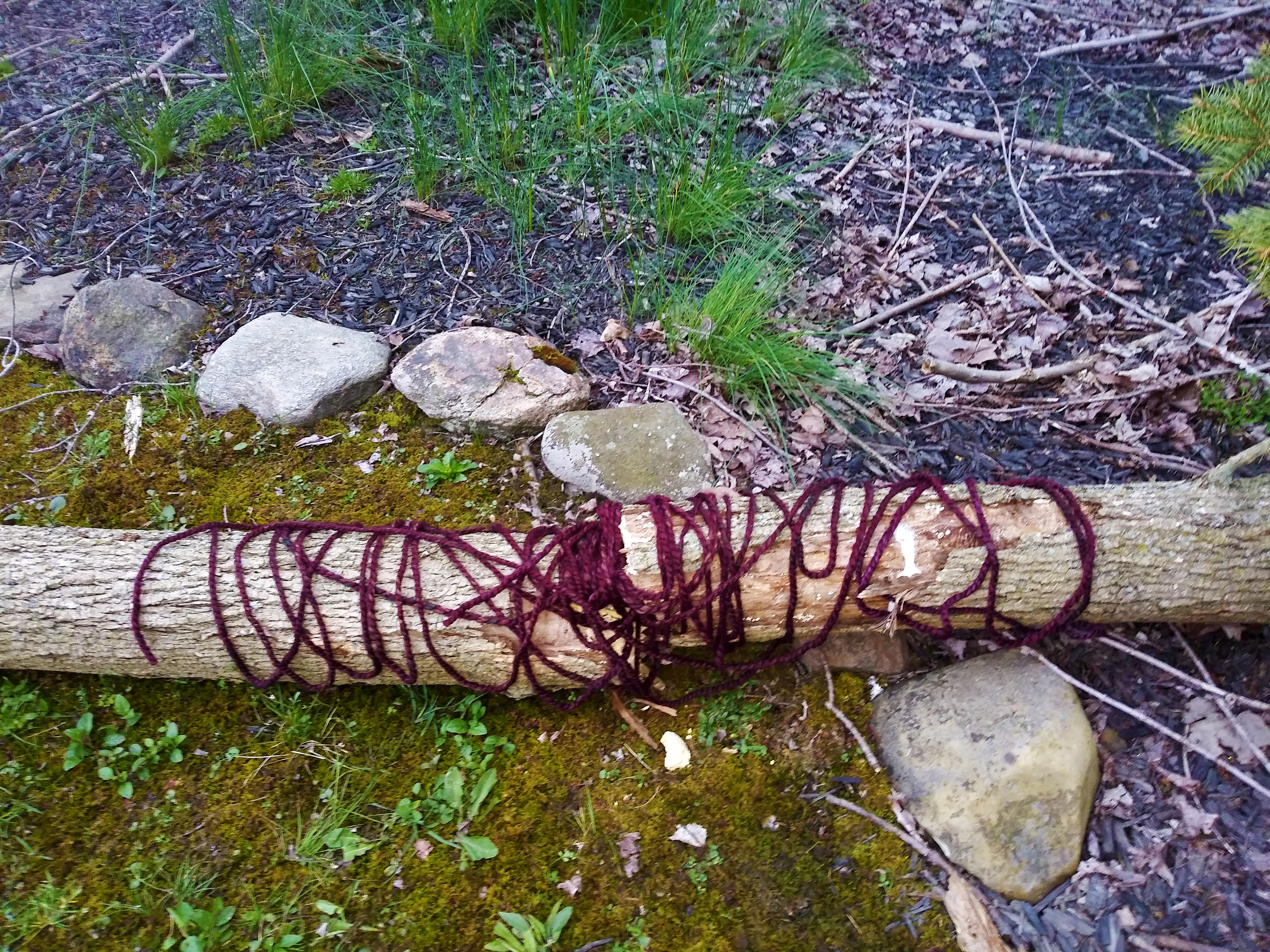RAVELING TRICEP
The red earth tone of the yarn allows itself to blend into the natural environment. Taking form in the area between two tree branches, the yarn fills the void in a linear pattern. Following the natural extension of the branches, the yarn is applied in a binding fashion. Lines reference movement by forming tight zig-zag patterns. The geometric triangles that the pattern produces are used to contrast the organic shapes made in the natural environment of the woods. When looking up at the art piece, the yarn blends in and surrenders itself to the thicket of surrounding tree branches. The goal was to make a piece that could naturally bend into the environment with minimal alteration to the natural site.
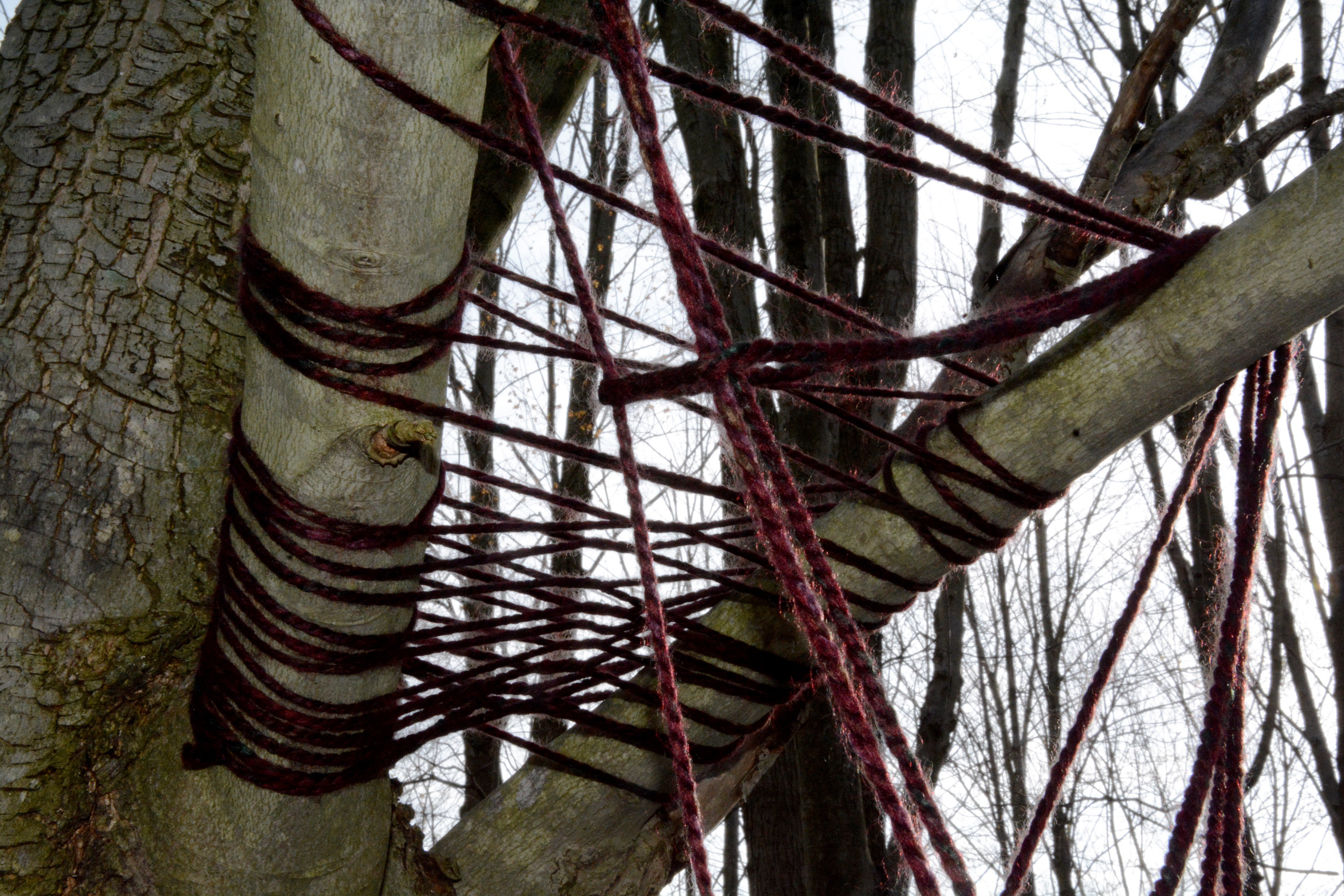

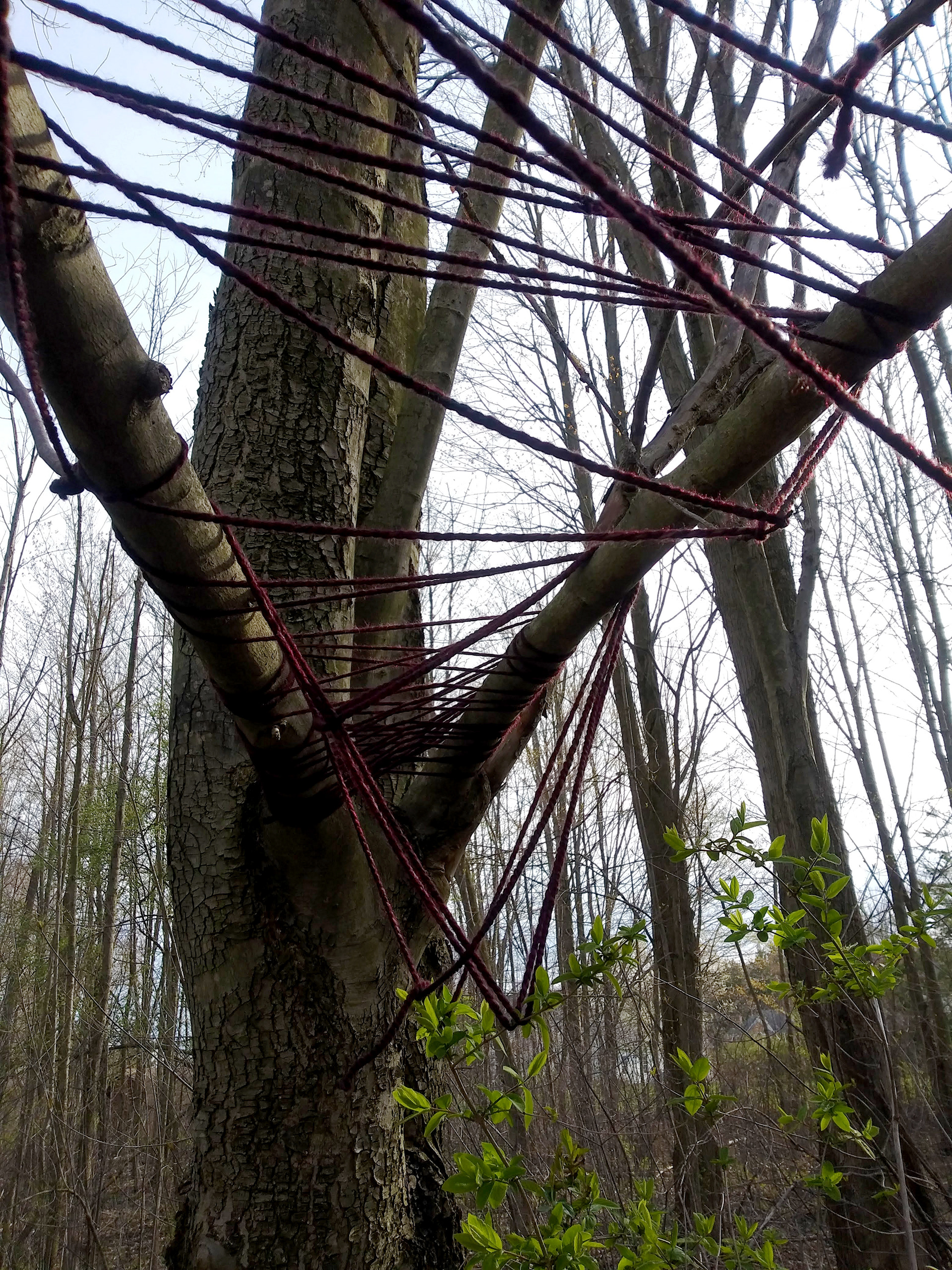
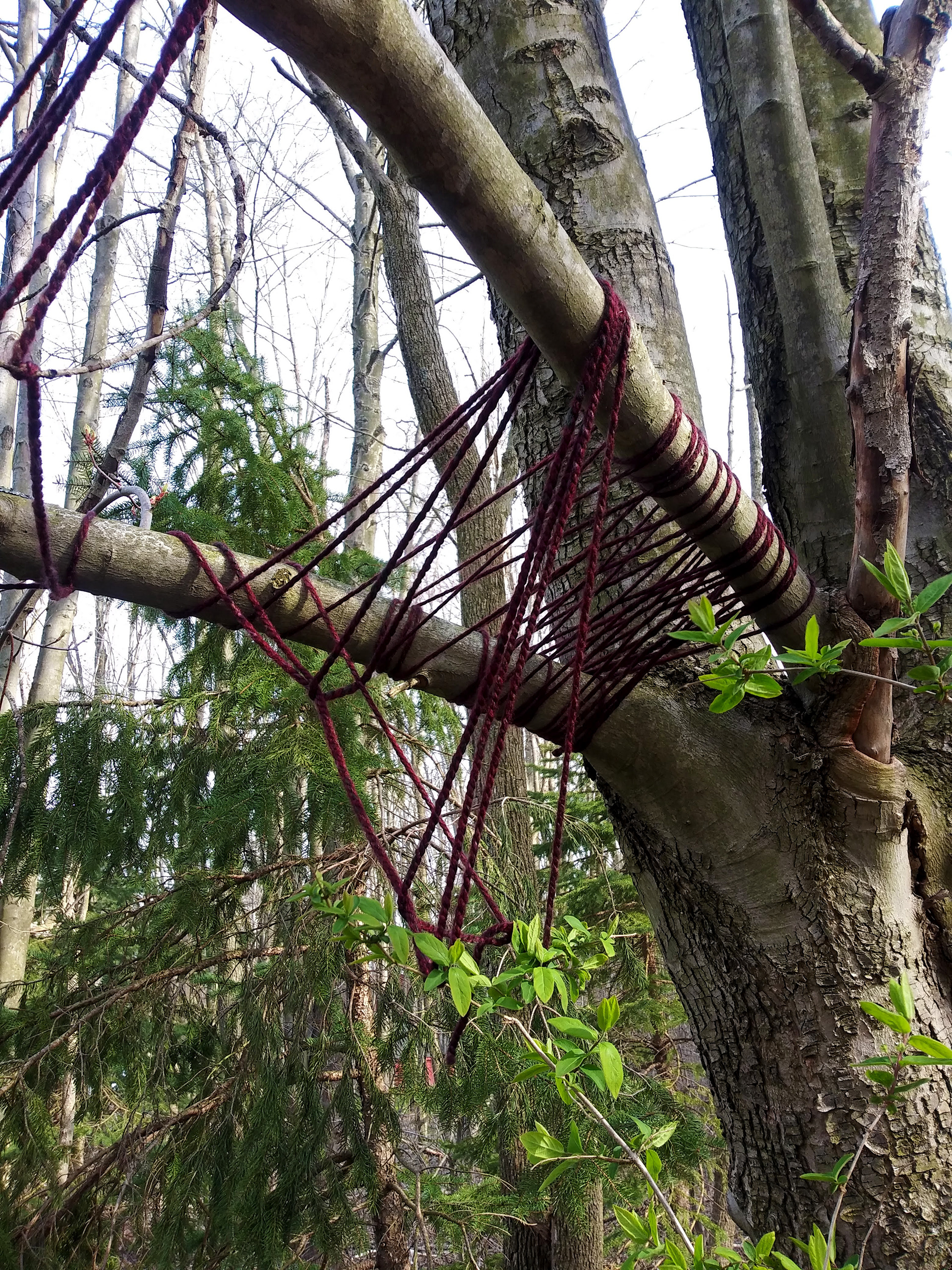
EXTENDING BOUNDARIES
Paths are naturally made in the woods in result of trees working in collaboration with the forest floor. Utilizing the natural grouping and clustering of trees, four thin trees became subject to this art piece. Again using yarn with a red earth tone, the theme of paths evoking movement became essential to this piece. The yarn is applied in a linear series of lines that follows from one tree to another. The lines form the “z” shape to mimic how directional the paths along the ground are. The yarn is parallel to the forest floor as if the ground plane has been elevated. Similar to the previous piece, this one also emphasizes straight line and angles in contrast with the organic shapes made in nature.

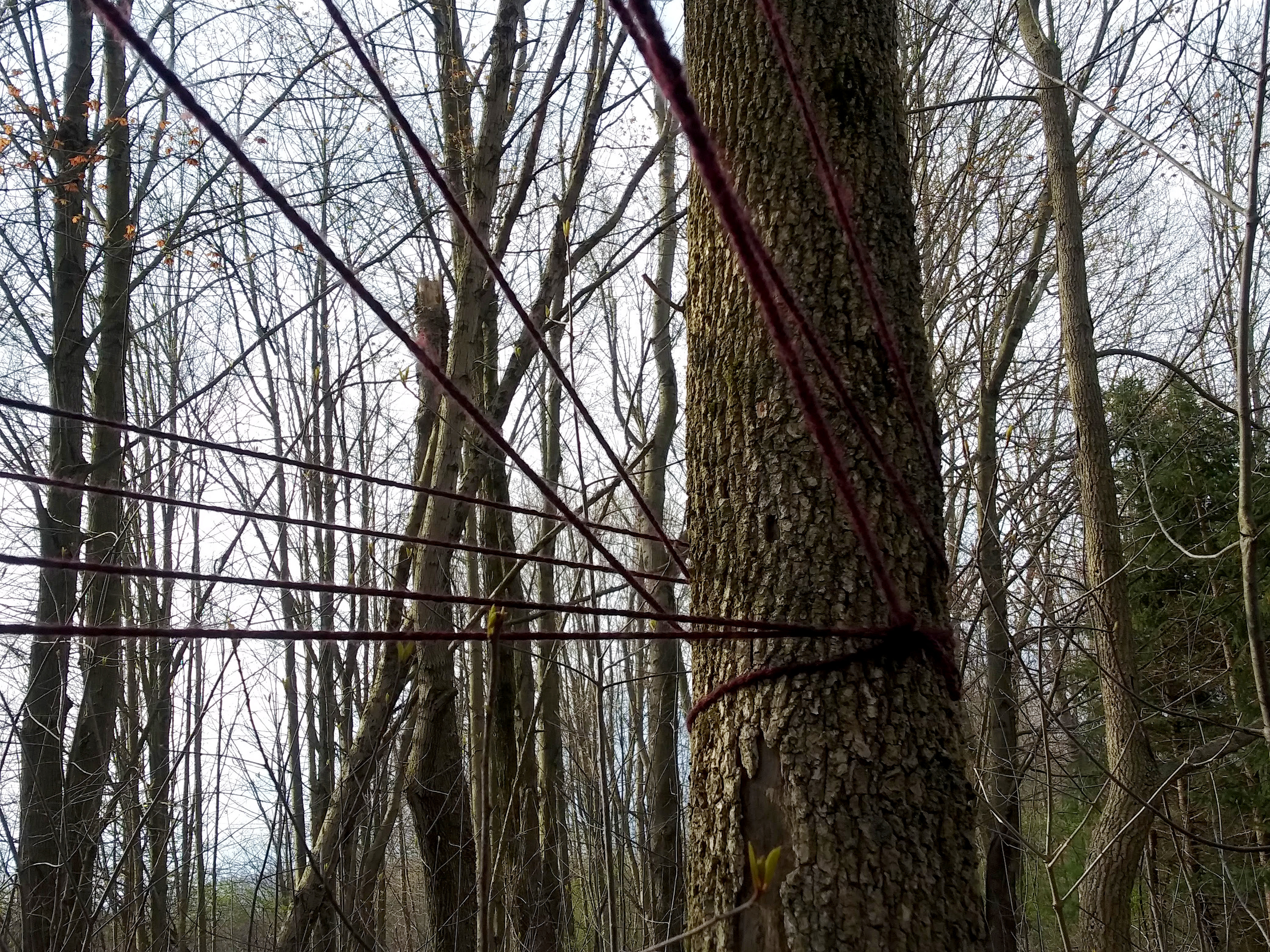
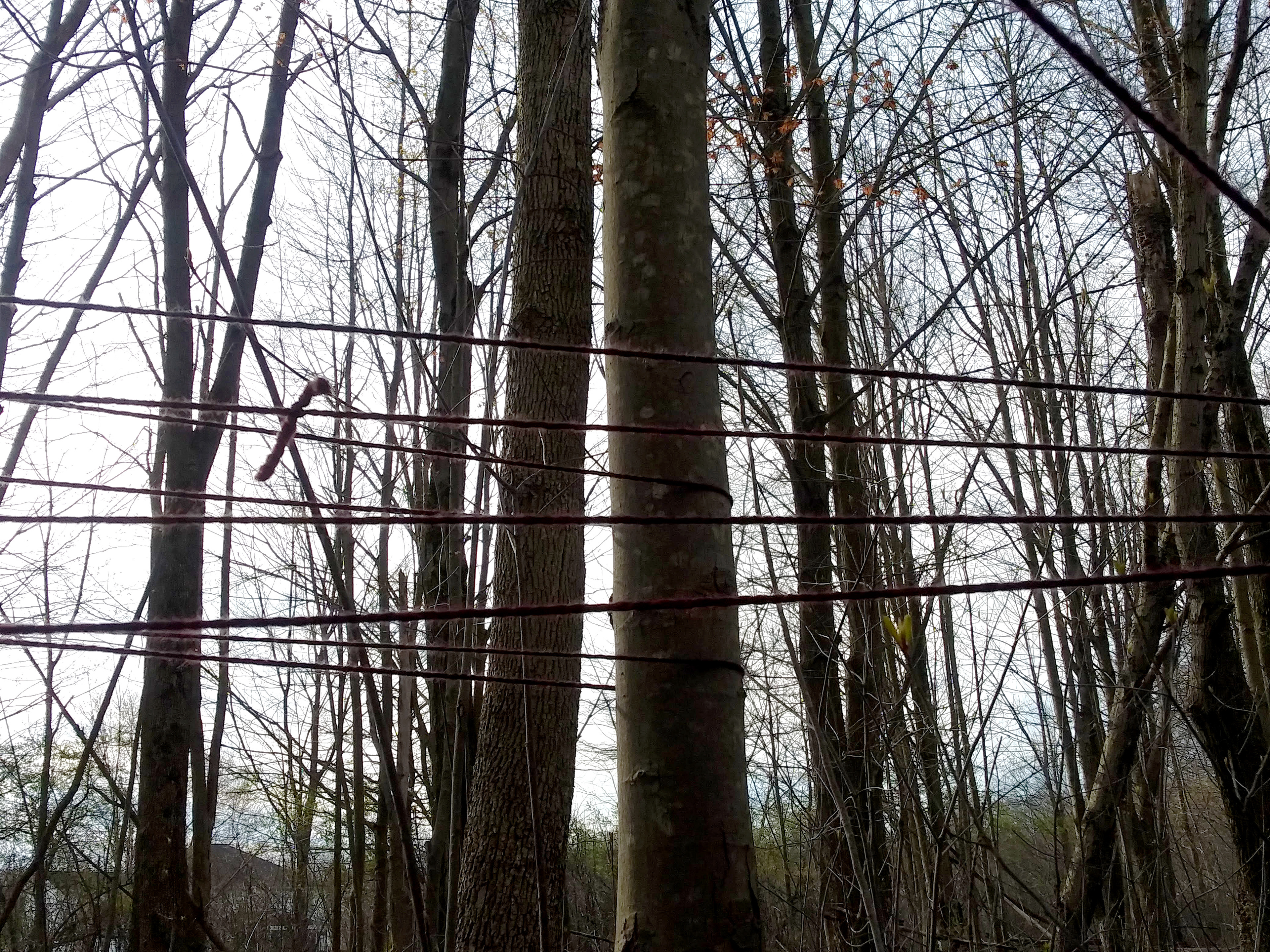
DRAPING CAPE
Found lying on the ground, this thin tree had fallen and split in half. The yarns attempt to bridge the gap by tying the two halves together. Unlike the previous works, this one utilizes the organic form of the tree. The yarn drapes the surface the same way that moss grows on trees. Draping along the tree’s surface, the yarn reaches the point of disconnect where it dips between the cracks of two ends. The strands bundle in a failed attempt to fill the void. What was broken, cannot be repaired. After exploring the void, the yarn continues its journey toward the other half of the tree; where it continues to drape along the form of the tree. The looseness in which the yarn is applied continues the overarching theme of using loose lines to tie together form. The red earth tone of the yarn serves to complement the tree’s natural aesthetic; not take away from it.
